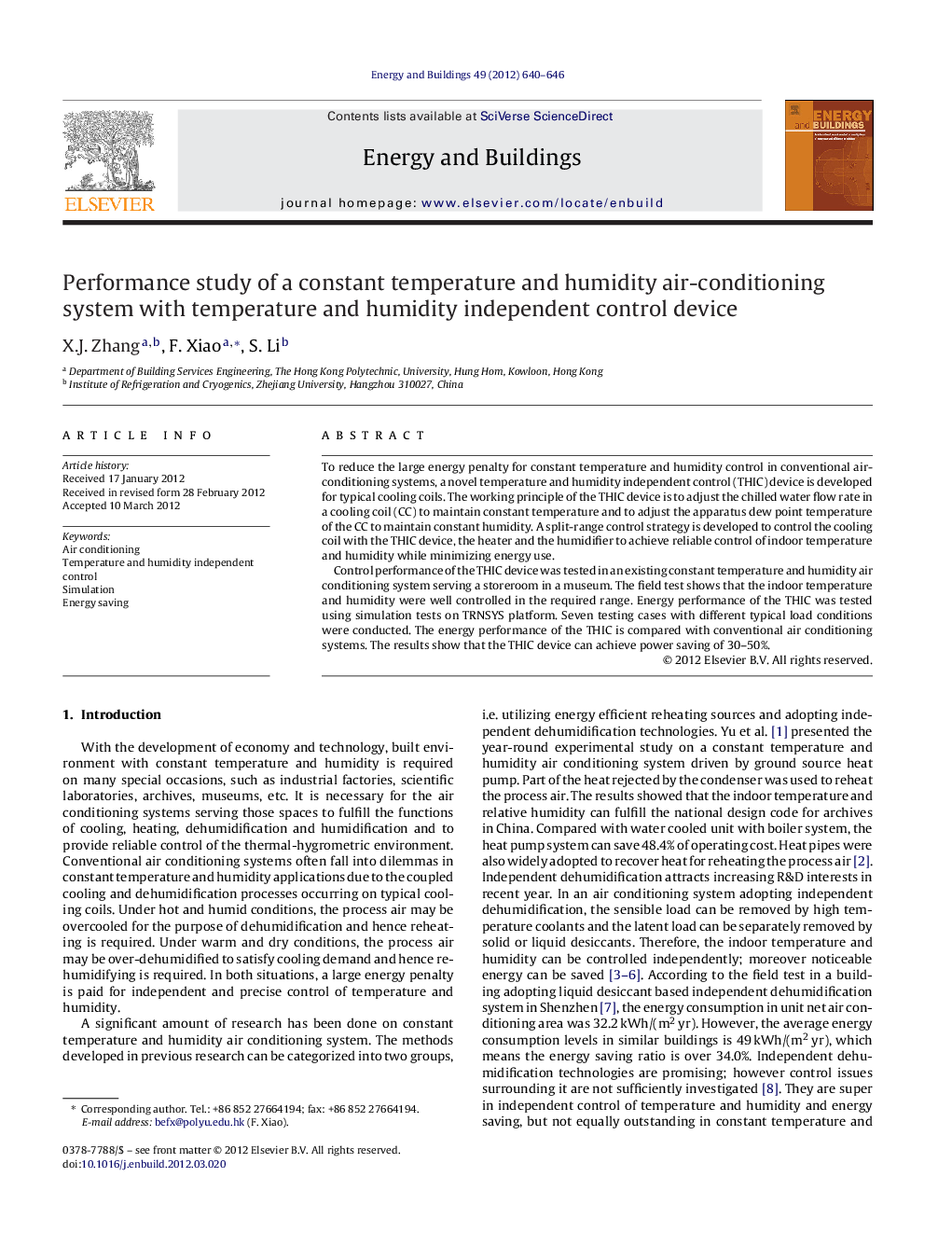| کد مقاله | کد نشریه | سال انتشار | مقاله انگلیسی | نسخه تمام متن |
|---|---|---|---|---|
| 263974 | 504086 | 2012 | 7 صفحه PDF | دانلود رایگان |

To reduce the large energy penalty for constant temperature and humidity control in conventional air-conditioning systems, a novel temperature and humidity independent control (THIC) device is developed for typical cooling coils. The working principle of the THIC device is to adjust the chilled water flow rate in a cooling coil (CC) to maintain constant temperature and to adjust the apparatus dew point temperature of the CC to maintain constant humidity. A split-range control strategy is developed to control the cooling coil with the THIC device, the heater and the humidifier to achieve reliable control of indoor temperature and humidity while minimizing energy use.Control performance of the THIC device was tested in an existing constant temperature and humidity air conditioning system serving a storeroom in a museum. The field test shows that the indoor temperature and humidity were well controlled in the required range. Energy performance of the THIC was tested using simulation tests on TRNSYS platform. Seven testing cases with different typical load conditions were conducted. The energy performance of the THIC is compared with conventional air conditioning systems. The results show that the THIC device can achieve power saving of 30–50%.
► A novel temperature and humidity independent control (THIC) device is proposed.
► A split-range control strategy is developed to control the THIC device.
► Energy performance of the THIC was tested on TRNSYS platform.
► The results show that the THIC device can achieve power saving of 30–50%.
Journal: Energy and Buildings - Volume 49, June 2012, Pages 640–646